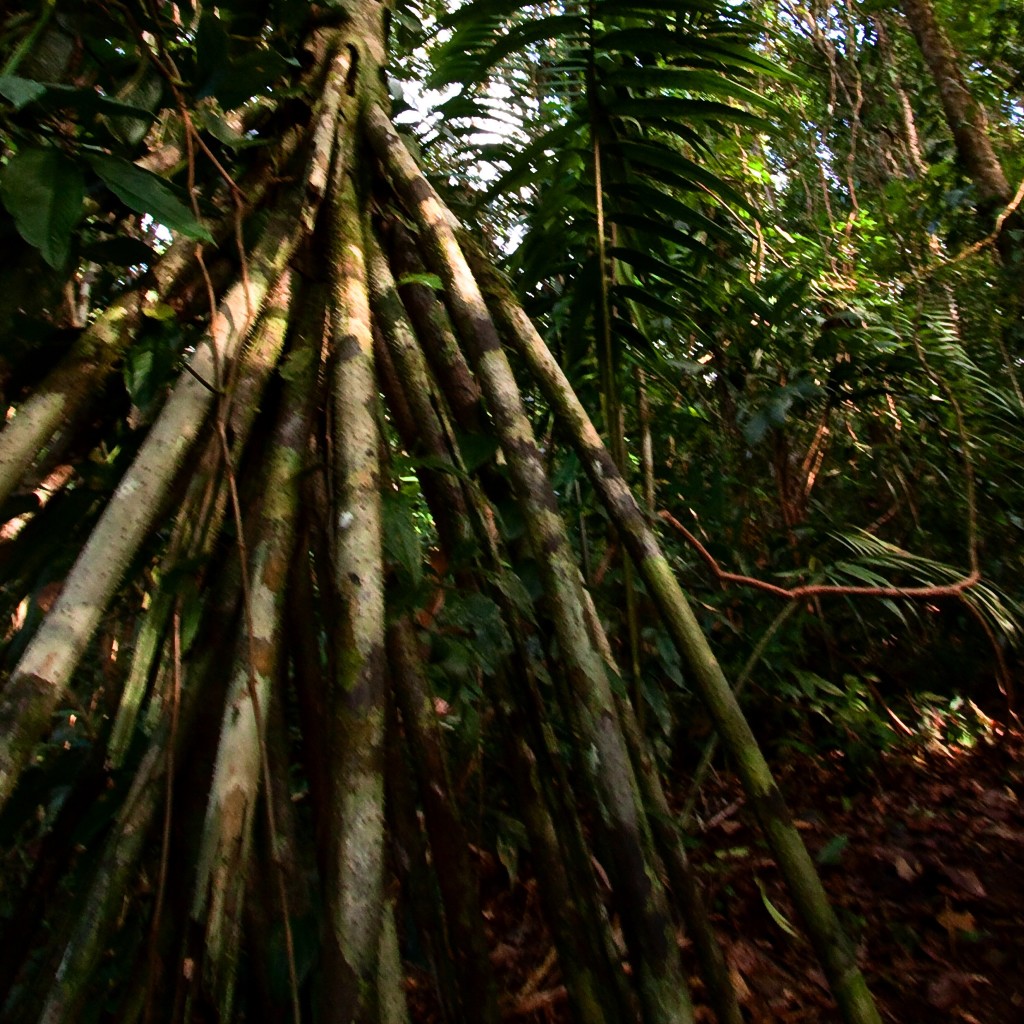
Socratea exorrhiza
Slowly over time, the Socratea exorrhiza “walks” through the rainforest by growing new stilt-like roots at one side, and letting go of its roots at the opposite side.
This begs the question: why would a tree adapt the ability to “walk” through the forest?
This is a topic that many scientists have been exploring over the years, and there have been several hypotheses. John H. Bodley suggested in 1980 that they in fact allow the palm to “walk away” from the point of germination if another tree falls on the seedling and knocks it over. This way, the tree can move away from obstacles that are major hazards for immature palms.
As one can imagine, in a jungle thick with plant life, this would be a very useful tool for survival. If such an event occurs, then the palm produces new vertical stilt roots and can then right itself, the original roots rotting away.
It is also hypothesized that the “walking” adaptation allows the tree to find a better source of sunlight in very crowded rainforest.
It is believed that that the tall stilt roots may have adapted to allow trees to take root along a forest floor with much plant debris, and also to stabilize the tree. The tall stilts also allow the palm to invest less biomass in underground roots than other palms, therefore leaving more energy to be used in growing above ground.
Socratea exorrhiza is a palm native to rainforests in tropical Central and South America. It can grow to 75 feet in height. The Merwins have nine of these palms growing in the Merwin Palm Collection, and their phenologies range from juvenile to mature.